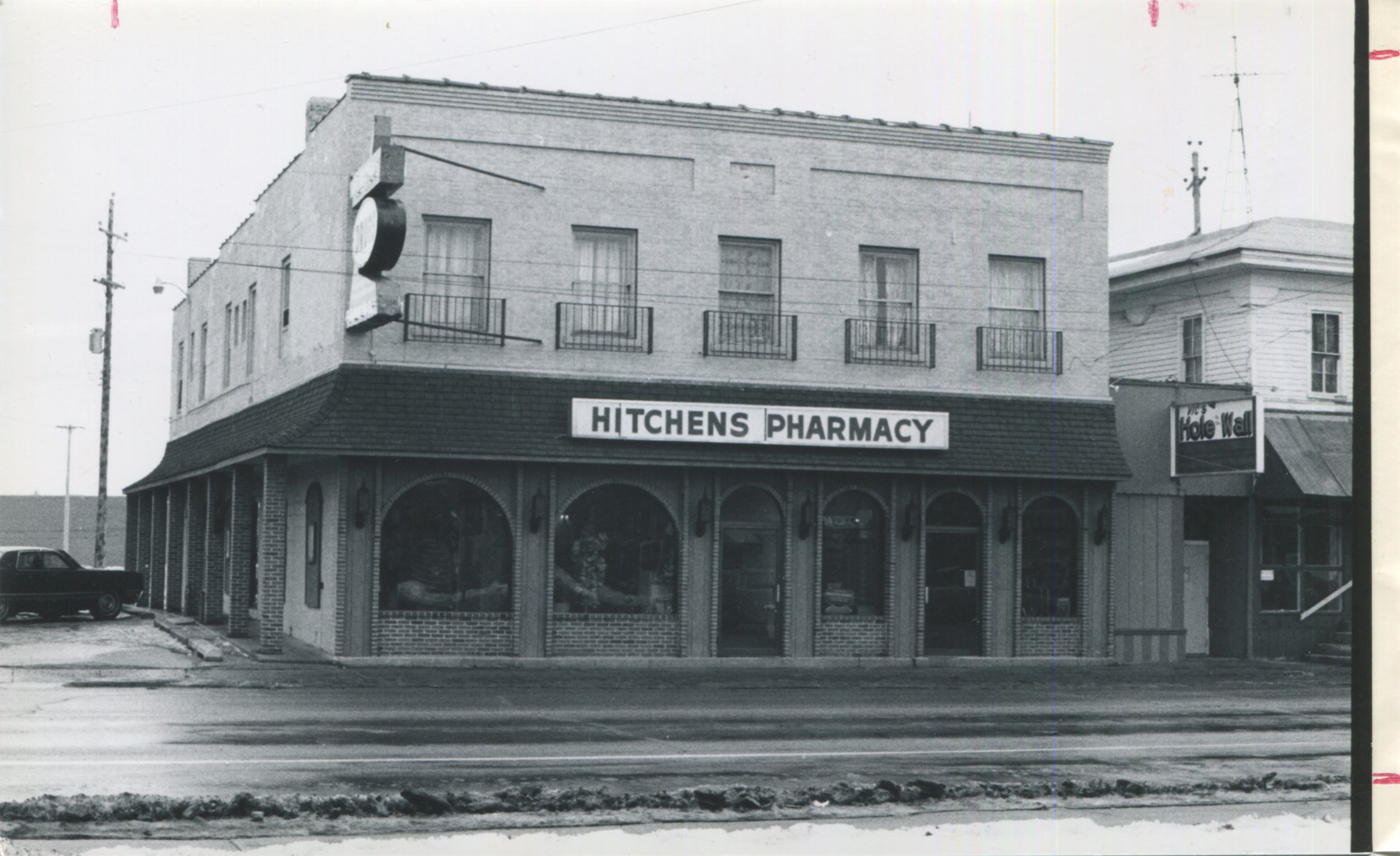
Robinson-Hitchens Building
Robinson-Hitchens Building
2006 North Cedar Street, Holt, Michigan
Status: Still Standing
Opened: 1922
Architect: Unknown
One of the landmark buildings located in downtown Holt’s business district, this commercial block stands at 2006 North Cedar Street. Many longtime residents know this as the Hitchens Building, though if named by its original owner, it would go by the Robinson Building. For the sake of accuracy, the building is known as the Robinson-Hitchens Building after its builder and longest occupant.
In 1922, Dr. Seth H. Jones platted and began selling lots in his new Arlington Park subdivision development. Lots 1, 2, 4, 5, and 6 were reserved for commercial storefronts. Lot 3 was occupied by the old Green family farmhouse. The Green farm is the land from which the new subdivision had been platted.
Dr. Jones advertised extensively locally in newspapers in preparation for selling lots in the plat. In a 1921 article, Jones told of daily inquiries he received to build in the new business district.
Lots 1 and 2, each with a price tag of $1600, were purchased together by J.W. Robinson and a single building was constructed on the joint lots. It is not immediately clear who J.W. Robinson was but he is believed to be a former Holt farmer turned Standard Real Estate Co. farm department realtor. The groundbreaking for the building was in December 1921. The building was constructed through the Winter, Spring and Summer 1922 by contractor A.L. Scott. The construction crew included 18 men. The building is built of concrete block with a brick facing. The second-floor houses apartments.
Taft Drug Store
The first tenant of the new Robinson Block was Taft Drug Store. Proprietor Francis Taft expanded his operation from a single store in North Lansing to the new business district in Holt. The drug store was able to immediately install all necessary fixtures, including a soda fountain, as they had an agreement with Robinson before the building’s construction was completed. Taft’s Holt Pharmacy was the first store of its kind in the community.
Taft’s operated out of the south half of the building, under the management of H.B. Huston. It is believed the north half of the building remained vacant for several years. Taft Pharmacy remained in operation from 1922 through 1929.
Hancock Pharmacy
In 1929, the pharmacy was sold to Myron P. Hancock. Hancock made the prescriptions himself, as many pharmacists of the time did. Hancock’s Holt Pharmacy remained in the space for a decade, through 1939. In 1939, Hancock was appointed postmaster of Holt and sold the pharmacy.
Red & White Grocery
In 1935, the Red and White Grocery Store opened in the north half of the building, it is the first recorded instance of a business in that portion of the building. The Red and White was a local Greater Lansing grocery chain, with the Holt location operated by Andrew Farnsworth and Allen Gibson. It is believed that longtime Holt merchant Leonard Potter had a connection to the Red and White, as did the Fleming family who lived across the road. The grocery store eventually became Wilkins and Kirby in the 1940s.
Hitchens Pharmacy
In 1939, Myron Hancock sold the building and business to an attorney in Jackson, who promptly sold the building and pharmacy operation to Orville Hitchens.
Hitchens’ included a pharmacy, for which Orville Hitchens made the prescriptions himself, and among other aspects of the business was a soda fountain. Mrs. Hitchens made all the food that was sold fresh in the store as well. Both Mr. and Mrs. Hitchens worked in the pharmacy every day for many years. Hitchens also sold Miller’s Ice Cream, which was produced on the Miller family farm in Eaton Rapids.
Hitchens’ was in the south half of the building from 1939 to 1954. In 1954, the Wilkins and Kirby grocery in the north half closed and Orville Hitchens expanded his business to the whole building, removing the divider in the middle. Hitchens’ Drug Store remained a staple in Holt for nearly 60 years. Orville Hitchens was known as “Holt’s favorite pharmacist.” Mr. Hitchens, though he became less involved in day-to-day operations, could still be found at the pharmacy every day. The Hitchens daughters maintained a lot of the daily operations in the later years. Hitchens’ Pharmacy closed in 1997. The Hitchens sold the building in 1998.
When Orville Hitchens retired, the building was dedicated as the Hitchens Building with a plaque placed on its upper façade.
Subsequent Businesses:
Around 1997, Hodge Podge, a gift store, opened in the south half of the building. Hodge Podge lasted just a few years.
In 1999, Sweet Mike’s Ice Cream and Candy Shop was opened by Mike Hedrick in the north half of the building. Sweet Mike’s featured items and furniture from the old Hitchens Drug Store. Eventually Sweet Mike’s encompassed the entire building, though it closed in 2006.
Biggby Coffee was a longtime occupant of the building, from 2007-2008 through 2022.
Studio M Portraits has operated in the south end of the building.
